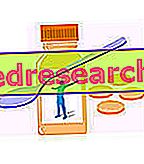By Dr. Giovanni Chetta
Food combinations
The digestion of the three nutritional principles that bring energy occurs at different and sequential stages: carbohydrates in the mouth, stomach and small intestine, proteins in the stomach and small intestine, lipids in the small intestine.
All foods, except for very rare exceptions, are made up of a combination of nutritional principles: this does not mean that we can eat anything but that our organs have certainly adapted to natural combinations, much less to man's food manipulations.

Carefully combining foods results in improved digestion and absorption.
To this end it is good, and easily achievable, to avoid combining more protein foods together (especially meat, eggs, cheese), avoiding sugars at the end of a meal (eg fruit and sweets) and avoiding acidic drinks at the meal.
Poor digestion leads to less assimilation and a greater waste of energy, fermentation and putrefaction with the production of toxic gases and substances such as: indole, phenol, ammonia (NH3), acetic acid and lactic acid. The latter, once absorbed, cause lowering of the immune defenses, humoral acidity, increase in the internal intestine temperature, alteration of the intestinal microflora; a favorable environment is created for the development of pathogenic and sub-pathogenic microflora capable of causing local and remote inflammatory diseases such as bronchitis, pharyngitis, cystitis, otitis, etc.
Food allergies and intolerances
Food allergies and intolerances are among the vast group of disorders defined as adverse reactions to food . The first observations on disorders related to food ingestion are very ancient: already Hippocrates, for example, had noticed the negative effects due to the ingestion of cow's milk. If the immune system intervenes in these reactions, it is food allergies, otherwise of intolerances I feed (the most widespread). However, adverse reactions to food are still one of the most controversial areas of medicine today as physiological mechanisms, clinical symptoms and diagnosis are not always clear.
Food allergy
Due to hypersensitivity to allergens or glycoproteins present in foods (especially in milk, eggs, fish, shellfish, peanuts, soy, tomatoes, wheat, nuts) and additives (egg lysozyme used as a bactericide, alpha-amylase funginea used as a leavening agent, proteins used as thickeners). Food handling can increase allergenicity (storage for apple and cod, cooking for peanuts, fish and soybean oil).
The clinical symptomatology consists mainly of gastrointestinal manifestations ( oral-allergic syndrome with papules or vesicles in the mucosa, suckling colic), cutaneous (eczema or topical dermatitis, urticaria, angioedema), respiratory (asthma 5.7% in the child, recurrent serous otitis media ), anaphylactic shock (the most serious, in some cases fatal).
Regarding the diagnosis, the laboratory tests are often insufficient, so it is essentially based on the anamnesis and the clinic but it too cannot always be certain. Allergy tests often give unreliable information because the available allergens are not purified (except for some foods such as cod).
The most reliable diagnosis is obtained through the elimination diet (diagnosis by exclusion) and consists of:
- finding suspected food (or a small number of suspect foods);
- its elimination from the diet for 2-3 weeks;
- its reintroduction into the diet for another 2-3 weeks.
If the symptoms disappear during the period in which the food from the diet is abolished and come back once again, it is very likely that this is an adverse reaction to food. In this case it is necessary to perform a differential allergy / intolerance diagnosis, verifying, through appropriate tests, the involvement or not of the immune system.
The treatment for food allergies, as for intolerances, consists in eliminating from the diet or consuming in small quantities the foods that cause the reaction.
Pseudo-allergies or food intolerances
According to some authors only less than 20% are true food allergies, the others are food intolerances (reactions not mediated by IgE). Generally they are due to drugs and food additives (tartrazine or the yellow dye of many beverages; sodium benzoate in soft drinks and sweets, bisulphite in wine and beer, salicylate prohibited by law but often present in fruit and vegetables, 4-hydroxybenzoic acid coming from from the processing of pasta and bread, vanillin in desserts, etc.). Even some foods can cause these syndromes if they are rich in histamine (some types of fish and meat, fermented drinks and fermented cheeses) or substances that can release it by non-immunological mechanisms (crustaceans, beans, chocolate, tomatoes, egg whites, etc.). ). Intoxications can also come from unripe fruits, vegetables and vegetables; well known is the "poisoning" power of solanine, a glucosidic alkaloid present, as a protection against fungi and insects, in tomatoes and still-green peppers, in aubergines and in sprouted potatoes, (cooking reduces their concentration by 40-50% initial).

The most common form of wheat intolerance is celiac disease, while talking about lactose intolerance is, as we have seen previously, an error in that it is a physiological interruption of production of the enzyme lactase, post-weaning, which occurs in the majority of the population. In this regard it may be useful to point out some lactose-poor cheeses: parmesan, emmental, cheddar, edam. Finally, it is important to read food labels as lactose is used as a sweetener (sweetener) and as an excipient (thickener, holds sodium and water with obvious economic advantages for the food manufacturing company thanks to the increase in product weight) in many foods (sausages, cooked ham, preserved meat, frankfurters, ready meals, snacks, chips etc.) and medicines (it makes them better accepted by the patient and facilitates the industrial preparation).
The "alternative tests" of food intolerance diagnosis are lacking in scientific reliability and have not yet demonstrated clinical efficacy.
Fending
Good quality raw materials, fruit, vegetables and ripe vegetables in season, maximum cleanliness and personal and environmental hygiene, avoid marble and wood (bacteria lurk in their holes) and use steel and formica, not cracked hands or wounds (receptacles of staffilococchi), cooked food put back in the fridge immediately (the bacterial proliferation starts again as soon as the temperature of the food is less than 60 °), avoid raw meat (responsible for 70% food infections). Some cooking cases help: a few minutes at 85 ° C are enough to deactivate the active ingredient of antibiotics.
Among the pesticides the most heat-resistant are the organochlorines (they accumulate in the adipose tissue that protects them during cooking), the pollutants remain unchanged. Finally, follow a correct dietary education (which may include the elimination of foods that have been proven to be intolerant (allergy) and living habits as healthy as possible (avoiding continuous stress, doing moderate physical activity, sleeping a sufficient number of hours etc.).



